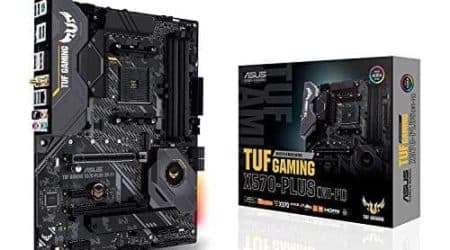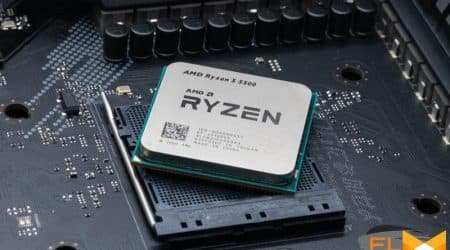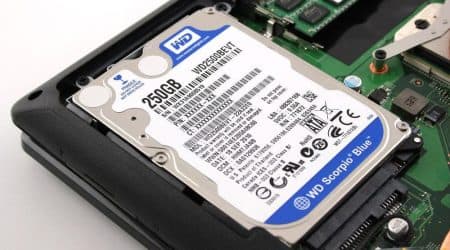


Best 3d Printer for Jewelry Making – 2024 Jewelry 3d Print
When it comes to creating intricate and detailed jewelry pieces, having the right tools is essential. A 3D printer specifically designed for jewelry making can be a game changer for jewelers, allowing them to bring their designs to life with precision and accuracy.
In this article, we have curated a list of the best 3D printers for jewelry, taking into consideration factors such as print quality, speed, ease of use, and overall value for money. Whether you are a professional jeweler or a hobbyist, these top picks are sure to meet your needs and help you take your craft to the next level.
One of our top picks is the Formlabs Form 3, a cutting-edge 3D printer that combines advanced technology with user-friendly features. With its high-resolution printing capabilities, the Form 3 is perfect for creating intricate jewelry designs with fine details and smooth surfaces. It offers a large build volume, allowing you to print multiple pieces at once, and its intuitive software makes it easy to optimize your prints for the best results.
Another excellent option is the EnvisionTEC Micro Plus, a compact and versatile 3D printer specifically designed for jewelry and dental applications. The Micro Plus uses a unique Digital Light Processing (DLP) technology that ensures accurate and fast printing. It also offers a wide range of materials to choose from, including castable resins, making it ideal for creating molds for metal casting.
If you are looking for a more budget-friendly option without compromising on quality, the Anycubic Photon is worth considering. This LCD-based resin printer offers high-resolution printing at an affordable price. It has a user-friendly interface and a large community of users, making it easy to find support and resources online. The Anycubic Photon is perfect for jewelers who are just starting their 3D printing journey and want to explore the possibilities without breaking the bank.
Investing in a 3D printer specifically designed for jewelry can greatly enhance your creativity and productivity as a jeweler. Whether you choose one of our top picks or explore other options in the market, incorporating 3D printing into your workflow will undoubtedly open up new possibilities and push the boundaries of what you can create.
About 3D printing technology 3d print jewelry
3D printing technology, also known as additive manufacturing, is a revolutionary process that allows for the creation of three-dimensional objects by layering materials, such as plastic or metal, in a controlled manner. Unlike traditional manufacturing methods that involve subtractive processes like cutting or shaping materials, 3D printing builds objects layer by layer, adding material where it is needed.
This technology has had a significant impact on various industries, including jewelry making. In the past, jewelry manufacturing required highly skilled craftsmen who would carve intricate designs by hand or use molds to create the desired pieces. However, with the advent of 3D printing, jewelers can now easily design and produce complex jewelry pieces with a high level of precision and detail.
One of the main advantages of 3D printing technology for jewelry making is its ability to create highly intricate designs that would be difficult to achieve using traditional manufacturing methods. Jewelers can now design intricate patterns and textures, and these designs can be easily reproduced with the help of a 3D printer.
Another benefit of 3D printing technology is its cost-effectiveness. Traditional jewelry manufacturing methods often require expensive molds or tooling, especially for custom designs or small production runs. With 3D printing, jewelers can eliminate the need for molds and produce custom pieces on-demand, reducing costs and increasing flexibility.
Furthermore, 3D printing technology allows for greater customization and personalization in jewelry making. Customers can now work closely with jewelers to create unique and one-of-a-kind pieces that reflect their personal style and preferences. Jewelers can easily modify designs and make adjustments without the need for manual rework or starting from scratch.
In conclusion, 3D printing technology has revolutionized the jewelry making industry by enabling jewelers to create intricate designs, reducing production costs, and offering greater customization options. With the continuous advancement of 3D printing technology, jewelers will continue to push the boundaries of creativity and innovation in the world of jewelry.
Benefits of 3D printing in jewelry making
3D printing technology has revolutionized various industries, and the jewelry industry is no exception. With its ability to create complex and intricate designs, 3D printing has ushered in a new era in jewelry making. Here are several benefits of using 3D printing in jewelry making:
1. Design Freedom
One of the greatest advantages of 3D printing in jewelry making is the freedom it offers designers. Traditional methods of jewelry making often limit the intricate designs that can be created. With 3D printing, jewelers can bring their most intricate and complex designs to life. This technology enables designers to experiment with a wide range of shapes, textures, and details, pushing the boundaries of traditional jewelry crafting.
2. Faster Prototyping
Before 3D printing, creating jewelry prototypes was a time-consuming process that involved skilled craftsmen carving wax or metal by hand. This process could take days or even weeks to complete. With 3D printing, jewelers can quickly produce a prototype of a new design, significantly reducing the time it takes to bring a concept to life.
By using 3D printing to create prototypes, jewelers can easily iterate on designs and make adjustments before finalizing the piece. This saves time and resources, allowing for a more efficient workflow.
3. Customization and Personalization
3D printing has opened up a world of possibilities for customization and personalization in jewelry making. With traditional methods, it was often difficult and costly to create unique pieces tailored to individual customers. 3D printing allows jewelers to easily create custom designs, incorporating specific elements or personal touches requested by customers.
Jewelers can also take advantage of parametric design tools and computer-aided design (CAD) software to create personalized jewelry. This allows for seamless integration of initials, birthstones, or other meaningful symbols into the design, creating pieces that hold special significance for the wearer.
4. Efficient Production
3D printing enables efficient production processes in jewelry making. Once a design is finalized and prototyped, jewelers can use 3D printers to produce multiple copies of the piece with ease. This automation reduces the need for manual labor and streamlines the production process.
Additionally, 3D printing allows for greater consistency in the production of multiples, ensuring that each piece is an accurate representation of the original design. This level of consistency is difficult to achieve with traditional handcrafted jewelry.
In conclusion, 3D printing has brought numerous benefits to the jewelry making industry. From design freedom and faster prototyping to customization and efficient production, this technology has opened up new possibilities and pushed the boundaries of what is possible in jewelry design.
Top Picks for Jewelers
When it comes to 3D printing jewelry, having the right printer can make all the difference. Whether you’re a professional jeweler or just starting out, there are several options available that can meet your needs. Here are our top picks for jewelers:
1. Formlabs Form 3
The Formlabs Form 3 is a high-quality 3D printer that is specifically designed for jewelry making. It offers high-resolution printing, allowing you to create intricate and detailed designs. The printer is easy to use and offers a wide range of materials to choose from, including castable resins for creating molds for metal casting. The Form 3 also comes with a user-friendly software interface, making it easy to customize and print your designs.
2. Solidscape MAX2Plus
The Solidscape MAX2Plus is another top pick for jewelers. This printer offers precise and accurate printing, allowing you to create complex and intricate jewelry designs. It uses wax materials that are specifically designed for jewelry making, ensuring smooth and high-quality prints. The MAX2Plus also comes with advanced software that allows you to easily customize and adjust your designs before printing.
3. B9Creations B9 Core Series
The B9Creations B9 Core Series is a versatile 3D printer that is well-suited for jewelry making. It offers high-resolution printing, allowing you to create detailed and delicate designs. The printer also offers a range of materials, including castable resins and flexible resins, giving you the flexibility to create a variety of jewelry pieces. The B9 Core Series also comes with user-friendly software that makes it easy to design and print your jewelry.
When choosing a 3D printer for jewelry making, consider your specific needs and budget. These top picks offer a combination of quality, precision, and ease of use, making them ideal for jewelers of all skill levels.
| Printer | Resolution | Materials | Software |
|---|---|---|---|
| Formlabs Form 3 | High | Castable resins, durable resins | User-friendly |
| Solidscape MAX2Plus | Precise | Wax materials | Advanced |
| B9Creations B9 Core Series | High | Castable resins, flexible resins | User-friendly |
XYZprinting Nobel 1.0A
The XYZprinting Nobel 1.0A is a high-quality 3D printer that is specifically designed for jewelry makers and professionals in the industry. It offers precise and detailed printing capabilities, making it an excellent choice for creating intricate jewelry designs.
One of the key features of the XYZprinting Nobel 1.0A is its advanced stereolithography (SL) technology. This technology uses a UV laser to cure liquid resin, resulting in highly accurate and smooth prints. With a layer thickness as low as 25 microns, the printer can produce intricate designs with fine details, ensuring that your jewelry pieces come out looking stunning.
The Nobel 1.0A also boasts a large build volume of 128 x 128 x 200 mm, allowing you to create a variety of jewelry pieces, from rings and earrings to pendants and bracelets. The printer’s precision and reliability ensure that every print will meet your exact specifications, giving you full control over the design and quality of your jewelry.
Easy to Use and Convenient
Despite its advanced capabilities, the XYZprinting Nobel 1.0A is surprisingly easy to use. It features a user-friendly interface and intuitive controls, allowing even beginners in the industry to operate the printer with ease. The printer also has a built-in touchscreen display that provides step-by-step instructions, making the printing process straightforward and hassle-free.
In addition, the Nobel 1.0A has a convenient resin auto-refill system. This feature automatically refills the resin tank when it is running low, saving you time and effort. The printer also has a resin-washing tank, which helps to clean the printed object quickly and efficiently.
Reliable and Supportive
XYZprinting is known for its excellent customer support, and the Nobel 1.0A is no exception. The company provides comprehensive technical support and assistance, ensuring that you are never alone in your 3D printing journey. Whether you need help with troubleshooting or have questions about the printer’s capabilities, XYZprinting’s customer service team is always ready to assist you.
- Highly accurate and detailed prints
- Advanced stereolithography technology
- Large build volume for various jewelry designs
- User-friendly interface and intuitive controls
- Resin auto-refill system for convenience
- Reliable customer support from XYZprinting
In summary, the XYZprinting Nobel 1.0A is an exceptional 3D printer for jewelry makers. With its precise printing capabilities, ease of use, and reliable support, this printer is a valuable tool for creating stunning and intricate jewelry designs.
Formlabs Form 2
The Formlabs Form 2 is widely regarded as one of the best 3D printers for jewelry. It offers high precision printing and a variety of features specifically tailored for jewelers.
Precision
With a layer thickness of 25 microns, the Form 2 can produce extremely detailed and intricate designs. This level of precision ensures that even the smallest details of a piece of jewelry are accurately captured in the final print.
Supports a Variety of Materials
The Form 2 is compatible with a wide range of materials suitable for jewelry making, including resin materials designed specifically for the jewelry industry. This allows jewelers to create highly detailed and accurate prototypes, as well as final pieces, using the printer.
Additionally, the printer’s resin cartridges are easy to replace and refill, making the printing process more convenient for jewelers.
The Form 2 also offers a variety of print settings and supports different resin types, ensuring that jewelers have the flexibility and control they need to create their desired pieces.
Overall, the Formlabs Form 2 is a top choice for jewelers who require high precision and quality in their 3D printed jewelry. Its advanced features and compatibility with a variety of materials make it an excellent investment for any jeweler looking to incorporate 3D printing into their workflow.
DWS Xfab
The DWS Xfab is a top-of-the-line 3D printer specifically designed for jewelers. With its precision and high-resolution capabilities, it is considered one of the best options for creating intricate and detailed jewelry pieces.
This printer utilizes DWS’s innovative technology, known as “Photoshade,” which allows for the creation of highly detailed and realistic jewelry models. It uses a combination of light, photosensitive resins, and a high-performance digital projector to create stunningly accurate prints.
The Xfab features a large build volume, allowing for the production of multiple jewelry pieces simultaneously. It also has a fast printing speed, enabling jewelers to quickly iterate and refine their designs. Additionally, it offers a variety of materials, including different types of resins and ceramic-filled resins, giving jewelers a wide range of options for their creations.
One of the standout features of the Xfab is its advanced software capabilities. It comes with powerful software that allows jewelers to easily design, modify, and prepare their models for printing. The software also includes automatic support generation, which helps ensure the successful printing of complex designs.
Another advantage of the Xfab is its user-friendly interface and intuitive operation. Jewelers can easily navigate the printer’s controls and settings, even if they are new to 3D printing technology. This makes the Xfab an excellent choice for both experienced jewelers and those who are just starting to explore the world of 3D printing.
In summary, the DWS Xfab is a top choice for jewelers looking for a high-quality 3D printer. Its precision, high-resolution capabilities, large build volume, and user-friendly interface make it an excellent tool for creating intricate and detailed jewelry pieces.
Factors to consider when choosing a 3D printer for jewelry
When choosing a 3D printer for jewelry, there are several important factors to consider. The right printer can greatly impact the quality and efficiency of your jewelry production process. Here are some key factors to keep in mind:
Printing Technology: Different 3D printers use different printing technologies, such as SLA (Stereolithography) or DLP (Digital Light Processing). It’s important to understand the pros and cons of each technology and how they can affect the final output of your jewelry designs.
Resolution: The resolution of a 3D printer determines the level of detail and precision it can achieve. For jewelry applications, a high resolution is crucial to capture intricate details and achieve a smooth surface finish. Look for printers with a resolution of at least 25-50 microns.
Print Bed Size: Consider the size of the print bed and make sure it is large enough to accommodate the size of your jewelry designs. Depending on the type of jewelry you create, you may need a larger or smaller print bed to fit your models.
Build Materials: Check the compatibility of the printer with the materials you plan to use for your jewelry. Some printers are designed to work with specific types of resins or filaments. Ensure that the printer can handle the materials required for your desired jewelry designs.
Software Compatibility: Consider the compatibility of the printer’s software with your existing design software. It’s important to have easy and seamless integration between the two to streamline your workflow and avoid any compatibility issues.
Price: Evaluate the price of the printer and consider your budget. While it’s tempting to opt for a more affordable option, it’s important to strike a balance between price and quality. Investing in a higher-quality printer may yield better results in terms of accuracy and durability in the long run.
Customer Support and Warranty: Check the availability and quality of customer support provided by the manufacturer. Look for warranties and after-sales service options to ensure that you will have assistance in case of any technical issues or malfunctions.
By considering these factors, you can make a more informed decision when choosing a 3D printer for your jewelry production needs. Finding the right printer will enable you to produce high-quality jewelry designs with precision and efficiency.
Printing resolution
When it comes to 3D printing jewelry, printing resolution is a crucial factor to consider. The resolution determines the level of detail and smoothness in the final printed piece. As jewelry often consists of intricate designs and delicate features, a high printing resolution is essential to achieve the desired quality.
Printing resolution is measured in microns, which refers to the layer thickness of the printed object. The smaller the micron value, the higher the resolution. For jewelry printing, a resolution between 25 to 50 microns is recommended to achieve fine details and smooth surfaces.
Having a high-resolution 3D printer ensures that the jewelry design is accurately and precisely reproduced. It allows for the production of intricate patterns, complex geometries, and ornate textures. The ability to print with such precision opens up endless possibilities for jewelry designers to create unique and stunning pieces.
Importance of printing resolution in jewelry making
The importance of printing resolution in jewelry making cannot be overstated. With a high-resolution printer, jewelers can bring their designs to life with incredible precision and accuracy, capturing even the tiniest details. It allows for the creation of customized pieces, intricate filigree work, and delicate prong settings.
Furthermore, high resolution ensures that the surface finish of the printed jewelry is smooth and polished, minimizing the need for extensive post-processing. Finely printed details and a smooth finish contribute to the overall attractiveness and quality of the finished jewelry piece.
Choosing the right 3D printer for jewelry
When selecting a 3D printer for jewelry making, it is essential to consider its printing resolution capabilities. Look for printers that offer a range of resolution options between 25 to 50 microns or smaller, as this will provide the level of detail required for jewelry production.
Additionally, consider other factors such as the printer’s build volume, print speed, reliability, and compatibility with various jewelry-friendly materials like resin or castable wax. It is also helpful to read reviews and seek recommendations from other jewelers and professionals who have experience with specific 3D printers.
Investing in a high-quality 3D printer with excellent printing resolution capabilities is a worthwhile investment for jewelers looking to elevate their craft and create exceptional and intricate pieces of jewelry.
In conclusion, printing resolution plays a vital role in the 3D printing of jewelry. It determines the level of detail and quality achievable in the final printed piece. High-resolution printers enable jewelers to create intricate designs and achieve smooth, polished finishes. When choosing a 3D printer for jewelry making, consider a printer that offers a range of resolution options and meets other important criteria. With the right 3D printer, jewelers can bring their unique designs to life with precision and create stunning and captivating jewelry.
Material compatibility
When choosing a 3D printer for jewelry, it’s important to consider the material compatibility of the printer. Different types of materials are used in the jewelry-making process, such as wax, resin, and metal. Therefore, it’s crucial to ensure that the printer is compatible with the specific materials you plan to use.
Some 3D printers are designed specifically for jewelry making and offer a wide range of compatible materials. These printers often have specialized features that allow for the precise and detailed printing required for jewelry designs. It’s important to do thorough research and check the specifications of the printer to determine if it is compatible with the materials you need.
In addition to material compatibility, it’s also essential to consider the quality and precision of the prints. Jewelry requires intricate and precise details, so selecting a printer that can deliver high-resolution prints is crucial. Look for a printer that offers a minimum layer height and resolution that meets your requirements for fine jewelry designs.
Furthermore, consider the post-processing requirements for the materials used. Some materials may require additional curing or polishing after printing to achieve the desired finish. Make sure to factor in these post-processing steps when evaluating the material compatibility of a 3D printer.
Overall, choosing a 3D printer with the right material compatibility is essential for jewelry makers. By ensuring that the printer can handle the specific materials and deliver the level of detail required, you can achieve high-quality prints and bring your jewelry designs to life.
Cost and Affordability
When considering a 3D printer for jewelry making, cost and affordability are crucial factors to take into account. The price range for 3D printers varies widely, and it’s essential to find the right balance between price and quality.
Factors Affecting Cost
Several factors contribute to the cost of a 3D printer for jewelry. These factors include:
- Type of Printer: Different types of 3D printers, such as FDM (Fused Deposition Modeling) or SLA (Stereolithography), come with different price tags. Each type has its own advantages and disadvantages, leading to price variations.
- Printing Technology: The type of printing technology used by the 3D printer affects its price. Factors such as resolution, speed, and material compatibility can impact the overall cost.
- Build Volume: The build volume or the maximum size of the objects the printer can produce affects its cost. Higher build volumes often come with a higher price tag.
- Print Quality: Higher-quality prints often require more advanced printers, leading to higher costs.
- Brand and Reputation: Well-known brands with a good reputation often have higher prices, while lesser-known brands may offer more affordable options.
Considering these factors while assessing the cost can help you find a 3D printer that meets your budget and requirements.
Affordability and Value for Money
Just focusing on the upfront cost of a 3D printer may not provide a complete picture of its affordability. It’s essential to consider the long-term costs and benefits as well.
Factors to consider in terms of affordability and value for money include:
- Operating Costs: In addition to the initial purchase price, it’s important to factor in ongoing costs such as materials, maintenance, and energy consumption.
- Reliability and Performance: A more expensive 3D printer may offer better reliability and performance, reducing the risk of failed prints and the need for reprints.
- Longevity: A reliable and durable 3D printer can provide long-term value by lasting for years without the need for frequent repairs or replacements.
- Customer Support and Warranty: Consider the level of customer support provided by the manufacturer and the warranty terms to determine the overall value for money.
By carefully evaluating the cost, ongoing expenses, and long-term value for money, you can make an informed decision on the best 3D printer for your jewelry-making needs that fits within your budget.
FAQ: Best 3d printer for jewelry resin 3d printer
What is the best 3D printer for creating jewelry?
The best 3D printer for creating jewelry depends on several factors such as your budget and specific requirements. However, some popular options among jewelers include the Formlabs Form 3, the Ultimaker S5, and the Anycubic Photon Mono X.
Can you recommend a 3D printer that can print intricate designs with high detail?
For printing intricate designs with high detail, the Formlabs Form 3 is highly recommended. It uses a technique called Stereolithography (SLA) that allows for precise and accurate printing, making it perfect for creating jewelry with intricate details.
What is the most affordable 3D printer for jewelry making?
If you’re on a budget, the Anycubic Photon Mono X is a great option for jewelry making. It offers excellent print quality and precision at a more affordable price compared to some other printers in the market.
Is it possible to print jewelry with a resin-based 3D printer?
Yes, it is possible to print jewelry with a resin-based 3D printer. In fact, resin-based printers are preferred by many jewelers as they can produce highly detailed and accurate prints, perfect for creating intricate designs and delicate pieces of jewelry.
Can a 3D printer be used for creating custom-designed engagement rings?
Yes, a 3D printer can definitely be used for creating custom-designed engagement rings. With the right 3D modeling software and a compatible printer, jewelers can bring their clients’ unique ring designs to life with precision and accuracy.




